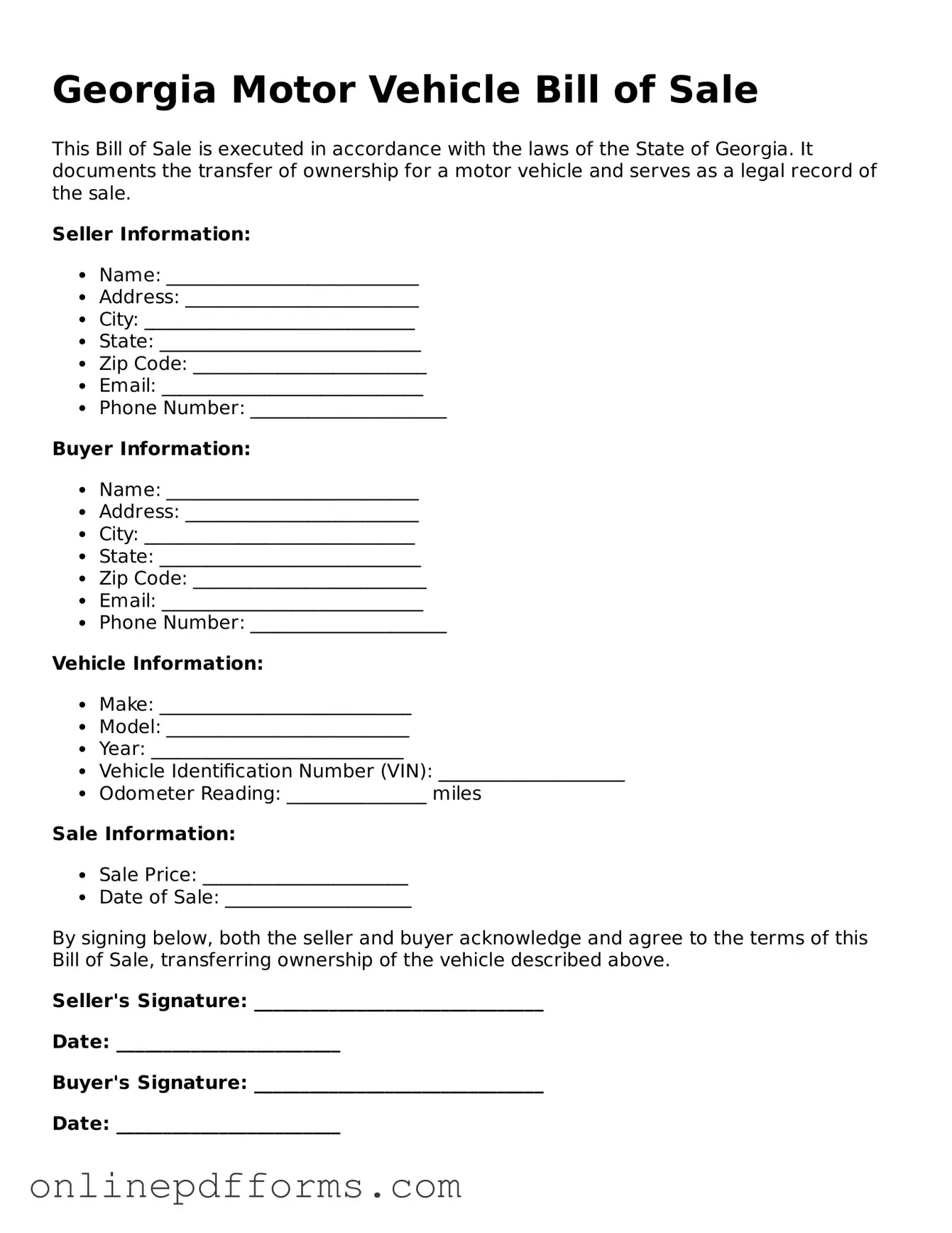The Georgia Vehicle Title Application is similar to the Motor Vehicle Bill of Sale in that it serves as a crucial document in the transfer of vehicle ownership. This application is required when a vehicle is sold or purchased. It includes details such as the buyer's and seller's information, vehicle identification number (VIN), and purchase price. Both documents ensure that the transaction is recorded and recognized by the state, providing legal protection for both parties involved in the sale.
The Vehicle Registration form also shares similarities with the Motor Vehicle Bill of Sale. While the Bill of Sale records the sale transaction, the Vehicle Registration form is necessary for officially registering the vehicle in the new owner's name. This document requires information about the vehicle, including its make, model, and VIN. Both forms must be completed accurately to facilitate a smooth transfer of ownership and compliance with state regulations.
The Odometer Disclosure Statement is another document that parallels the Motor Vehicle Bill of Sale. This statement is required when selling a vehicle to confirm the mileage at the time of sale. It protects buyers from potential fraud regarding the vehicle's condition and value. Like the Bill of Sale, the Odometer Disclosure Statement must be signed by both the buyer and seller to be legally binding, ensuring transparency in the transaction.
Lastly, the Affidavit of Sale is akin to the Motor Vehicle Bill of Sale in that it serves as a sworn statement regarding the sale of the vehicle. This document may be used in situations where a Bill of Sale is not available or when additional verification is needed. It typically includes the same essential information about the buyer, seller, and vehicle. Both documents provide evidence of the transaction, which can be critical in disputes or for future reference.
